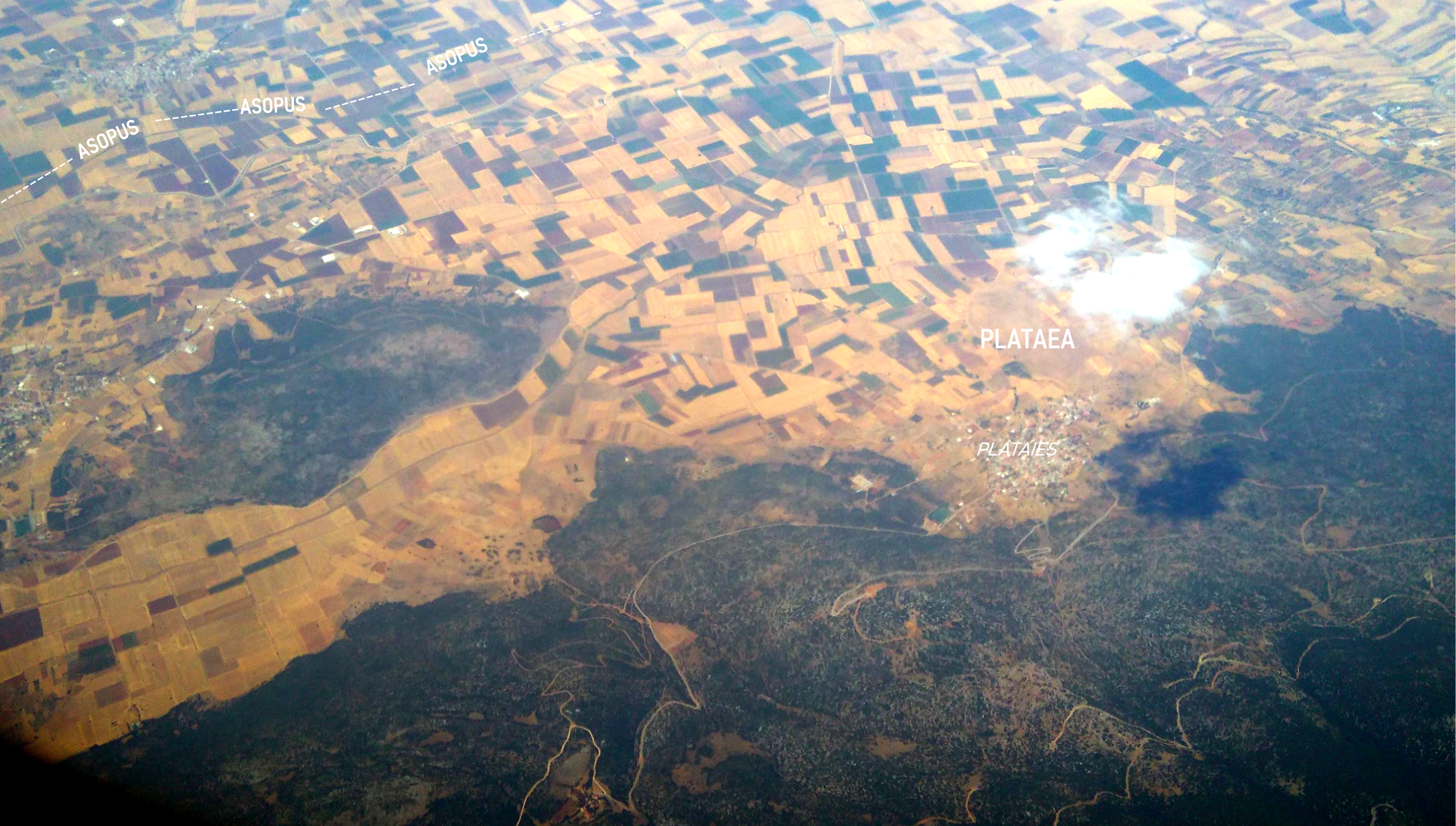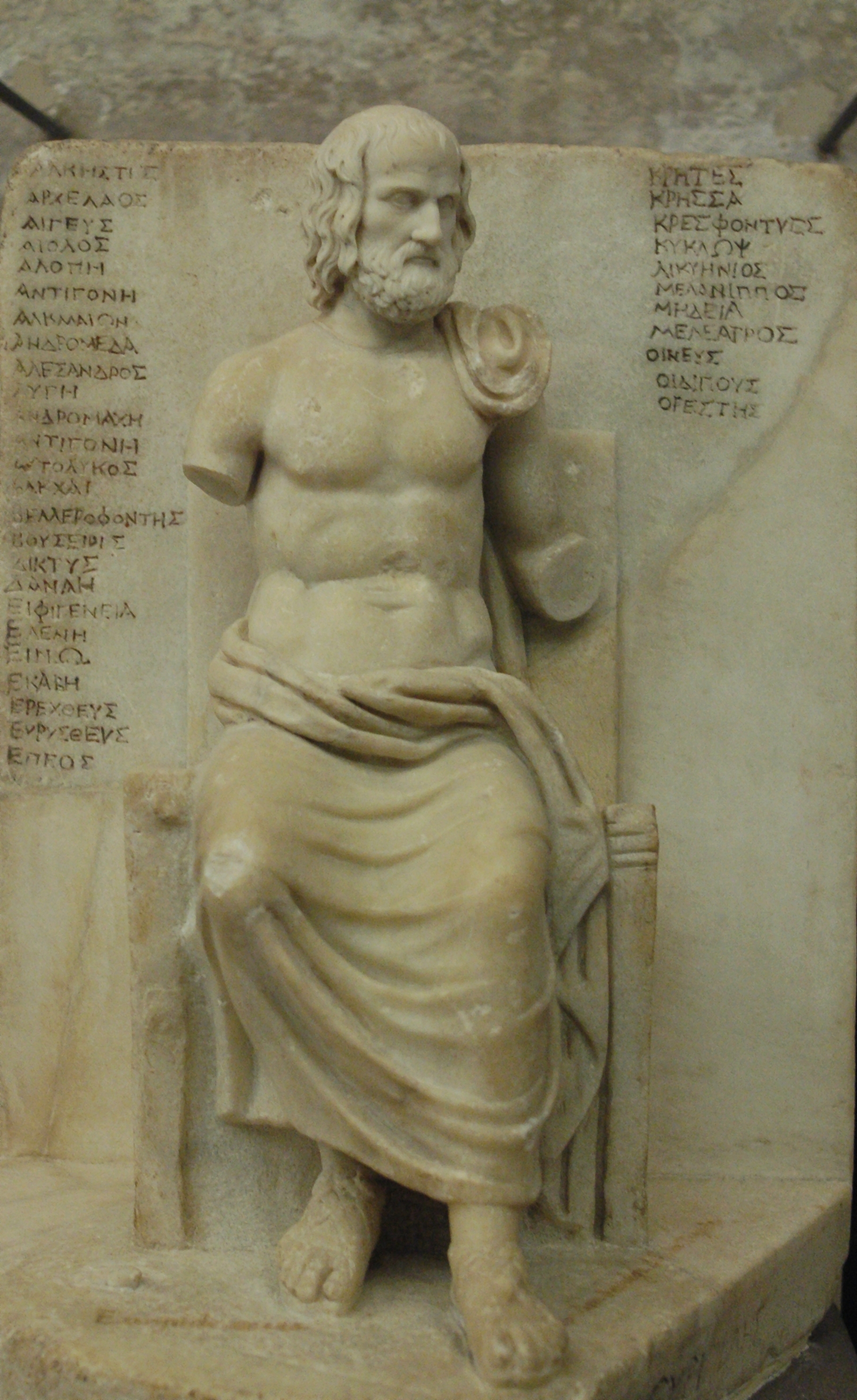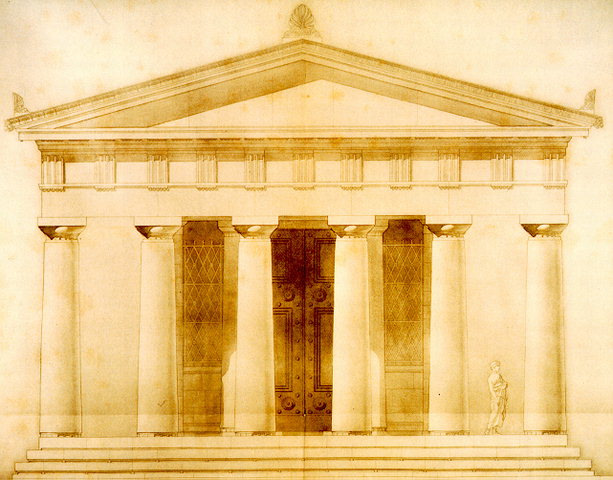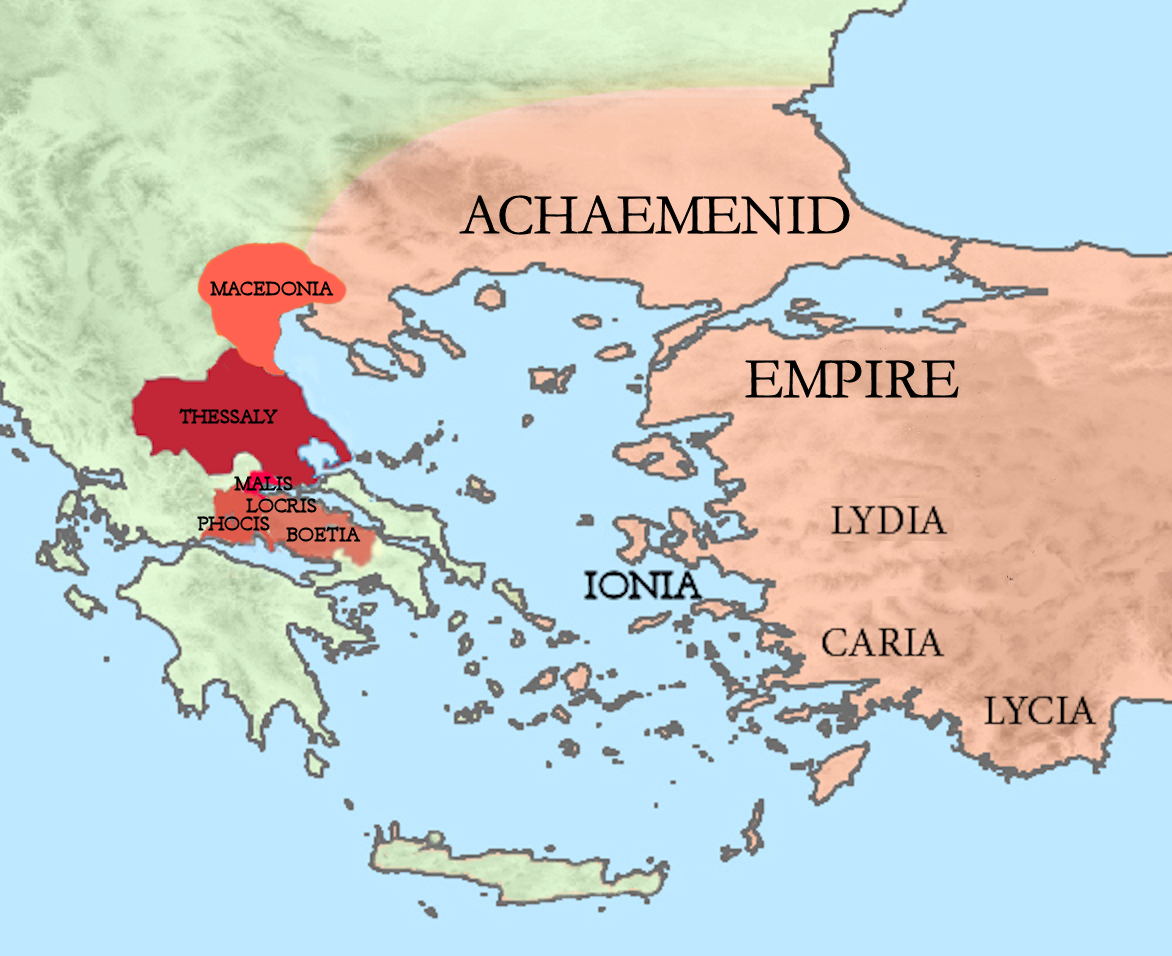|
Hysiae (Boeotia)
Hysiae or Hysiai ( grc, Ὑσιαί), also Hysia (Ὑσία), was a town of ancient Boeotia, in the Parasopia, at the northern foot of Mount Cithaeron, and on the high road from Thebes to Athens. It was said to have been a colony from Hyria, and to have been founded by Nycteus, father of Antiope. Herodotus says that both Hysiae and Oenoe were Attic demoi when they were taken by the Boeotians in 507 BCE. It probably, however, belonged to Plataea. Oenoe was recovered by the Athenians; but, as Mt. Cithaeron was the natural boundary between Attica and Boeotia, Hysiae continued to be a Boeotian town. Hysiae is mentioned in the operations which preceded the Battle of Plataea. Hysiae was in ruins in the time of Pausanias, who noticed there an unfinished temple of Apollo and a sacred well. Hysiae is mentioned also by Euripides and Thucydides. Its site is located near modern Kriekouki in Erythres Erythres ( el, Ερυθρές, formerly known as Kriekouki, Greek: Κριεκού ... [...More Info...] [...Related Items...] OR: [Wikipedia] [Google] [Baidu] |
Ancient Boeotia
Boeotia ( ), sometimes Latinized as Boiotia or Beotia ( el, Βοιωτία; modern: ; ancient: ), formerly known as Cadmeis, is one of the regional units of Greece. It is part of the region of Central Greece. Its capital is Livadeia, and its largest city is Thebes. Boeotia was also a region of ancient Greece, from before the 6th century BC. Geography Boeotia lies to the north of the eastern part of the Gulf of Corinth. It also has a short coastline on the Gulf of Euboea. It bordered on Megaris (now West Attica) in the south, Attica in the southeast, Euboea in the northeast, Opuntian Locris (now part of Phthiotis) in the north and Phocis in the west. The main mountain ranges of Boeotia are Mount Parnassus in the west, Mount Helicon in the southwest, Cithaeron in the south and Parnitha in the east. Its longest river, the Cephissus, flows in the central part, where most of the low-lying areas of Boeotia are found. Lake Copais was a large lake in the center ... [...More Info...] [...Related Items...] OR: [Wikipedia] [Google] [Baidu] |
Plataea
Plataea or Plataia (; grc, Πλάταια), also Plataeae or Plataiai (; grc, Πλαταιαί), was an ancient city, located in Greece in southeastern Boeotia, south of Thebes.Mish, Frederick C., Editor in Chief. “Plataea.” '' Webster’s Ninth New Collegiate Dictionary''. 9th ed. Springfield, MA: Merriam-Webster Inc., 1985. , (indexed), and (deluxe). It was the location of the Battle of Plataea in 479 BC, in which an alliance of Greek city-states defeated the Persians. Plataea was destroyed in the Peloponnesian War by Thebes and Sparta in 427 BC, and rebuilt in 386. The modern Greek town of Plataies is built near its ruins. Alliance with Athens and presence at Marathon Herodotus wrote that, in order to avoid coming under Theban hegemony, Plataea offered to "put themselves into Spartan hands". However, the Spartans refused this offer and, wishing to cause mischief between the Boeotians and Athens, recommended that the Plataeans ally themselves with Athens ins ... [...More Info...] [...Related Items...] OR: [Wikipedia] [Google] [Baidu] |
Populated Places In Ancient Attica
Population typically refers to the number of people in a single area, whether it be a city or town, region, country, continent, or the world. Governments typically quantify the size of the resident population within their jurisdiction using a census, a process of collecting, analysing, compiling, and publishing data regarding a population. Perspectives of various disciplines Social sciences In sociology and population geography, population refers to a group of human beings with some predefined criterion in common, such as location, race, ethnicity, nationality, or religion. Demography is a social science which entails the statistical study of populations. Ecology In ecology, a population is a group of organisms of the same species who inhabit the same particular geographical area and are capable of interbreeding. The area of a sexual population is the area where inter-breeding is possible between any pair within the area and more probable than cross-breeding with ... [...More Info...] [...Related Items...] OR: [Wikipedia] [Google] [Baidu] |
Erythres
Erythres ( el, Ερυθρές, formerly known as Kriekouki, Greek: Κριεκούκι) is a village and a former municipality in the northernmost part of West Attica, Greece. Since the 2011 local government reform it is part of the municipality Mandra-Eidyllia, of which it is a municipal unit. The municipal unit has an area of 61.145 km2. It is part of Athens metropolitan area. Erythres was named after the ancient city of Erythrae, the ruins of which are located 1.5 km east of the present town. The inhabitants of Erythres are Arvanites.Adamou E. & Drettas G. 2008, Slave, Le patrimoine plurilingue de la Grèce – Le nom des langues II, E. Adamou (éd.), BCILL 121, Leuven, Peeters, p.54. The Greek National Road 3 (Elefsina - Thebes - Florina) passes through Erythres. The area south of Erythres is mountainous, with the Kithaironas to the southwest and the Pastra to the southeast. The area north of Erythres is characterised by the wide, flat valley of the Boeotian river ... [...More Info...] [...Related Items...] OR: [Wikipedia] [Google] [Baidu] |
Thucydides
Thucydides (; grc, , }; BC) was an Athenian historian and general. His '' History of the Peloponnesian War'' recounts the fifth-century BC war between Sparta and Athens until the year 411 BC. Thucydides has been dubbed the father of " scientific history" by those who accept his claims to have applied strict standards of impartiality and evidence-gathering and analysis of cause and effect, without reference to intervention by the gods, as outlined in his introduction to his work. He also has been called the father of the school of political realism, which views the political behavior of individuals and the subsequent outcomes of relations between states as ultimately mediated by, and constructed upon, fear and self-interest. His text is still studied at universities and military colleges worldwide. The Melian dialogue is regarded as a seminal work of international relations theory, while his version of Pericles' Funeral Oration is widely studied by political theorists, ... [...More Info...] [...Related Items...] OR: [Wikipedia] [Google] [Baidu] |
Euripides
Euripides (; grc, Εὐριπίδης, Eurīpídēs, ; ) was a tragedian of classical Athens. Along with Aeschylus and Sophocles, he is one of the three ancient Greek tragedians for whom any plays have survived in full. Some ancient scholars attributed ninety-five plays to him, but the ''Suda'' says it was ninety-two at most. Of these, eighteen or nineteen have survived more or less complete ('' Rhesus'' is suspect). There are many fragments (some substantial) of most of his other plays. More of his plays have survived intact than those of Aeschylus and Sophocles together, partly because his popularity grew as theirs declinedMoses Hadas, ''Ten Plays by Euripides'', Bantam Classic (2006), Introduction, p. ixhe became, in the Hellenistic Age, a cornerstone of ancient literary education, along with Homer, Demosthenes, and Menander.L.P.E.Parker, ''Euripides: Alcestis'', Oxford University Press (2007), Introduction p. lx Euripides is identified with theatrical innovations that ... [...More Info...] [...Related Items...] OR: [Wikipedia] [Google] [Baidu] |
Apollo
Apollo, grc, Ἀπόλλωνος, Apóllōnos, label=genitive , ; , grc-dor, Ἀπέλλων, Apéllōn, ; grc, Ἀπείλων, Apeílōn, label=Arcadocypriot Greek, ; grc-aeo, Ἄπλουν, Áploun, la, Apollō, la, Apollinis, label=genitive, , ; , is one of the Twelve Olympians, Olympian deities in Ancient Greek religion, classical Greek and Ancient Roman religion, Roman religion and Greek mythology, Greek and Roman mythology. The national divinity of the Greeks, Apollo has been recognized as a god of archery, music and dance, truth and prophecy, healing and diseases, the Sun and light, poetry, and more. One of the most important and complex of the Greek gods, he is the son of Zeus and Leto, and the twin brother of Artemis, goddess of the hunt. Seen as the most beautiful god and the ideal of the ''kouros'' (ephebe, or a beardless, athletic youth), Apollo is considered to be the most Greek of all the gods. Apollo is known in Greek-influenced Etruscan mythology as ' ... [...More Info...] [...Related Items...] OR: [Wikipedia] [Google] [Baidu] |
Pausanias (geographer)
Pausanias ( /pɔːˈseɪniəs/; grc-gre, Παυσανίας; c. 110 – c. 180) was a Greek traveler and geographer of the second century AD. He is famous for his ''Description of Greece'' (, ), a lengthy work that describes ancient Greece from his firsthand observations. ''Description of Greece'' provides crucial information for making links between classical literature and modern archaeology. Biography Not much is known about Pausanias apart from what historians can piece together from his own writing. However, it is mostly certain that he was born c. 110 AD into a Greek family and was probably a native of Lydia in Asia Minor. From c. 150 until his death in 180, Pausanias travelled through the mainland of Greece, writing about various monuments, sacred spaces, and significant geographical sites along the way. In writing ''Description of Greece'', Pausanias sought to put together a lasting written account of "all things Greek", or ''panta ta hellenika''. Living in th ... [...More Info...] [...Related Items...] OR: [Wikipedia] [Google] [Baidu] |
Battle Of Plataea
The Battle of Plataea was the final land battle during the second Persian invasion of Greece. It took place in 479 BC near the city of Plataea in Boeotia, and was fought between an alliance of the Ancient Greece, Greek city-states (including Sparta, History of Athens, Athens, Corinth and Megara), and the Achaemenid Empire, Persian Empire of Xerxes I (allied with Greece's Boeotians, Thessalians, and Macedonia (ancient kingdom), Macedonians). The previous year the Persian invasion force, led by the Persian king in person, had scored victories at the battles of Battle of Thermopylae, Thermopylae and Battle of Artemisium, Artemisium and conquered Thessaly, Phocis, Boeotia, Euboea and Attica. However, at the ensuing Battle of Salamis, the allied Greek navy had won an unlikely but decisive victory, preventing the conquest of the Peloponnesus. Xerxes then retreated with much of his army, leaving his general Mardonius (nephew of Darius I), Mardonius to finish off the Greeks the followi ... [...More Info...] [...Related Items...] OR: [Wikipedia] [Google] [Baidu] |
Deme
In Ancient Greece, a deme or ( grc, δῆμος, plural: demoi, δημοι) was a suburb or a subdivision of Classical Athens, Athens and other city-states. Demes as simple subdivisions of land in the countryside seem to have existed in the 6th century BC and earlier, but did not acquire particular significance until the reforms of Cleisthenes in 508 BC. In those reforms, enrollment in the citizen-lists of a deme became the requirement for citizenship; prior to that time, citizenship had been based on membership in a phratry, or family group. At this same time, demes were established in the main city of Athens itself, where they had not previously existed; in all, at the end of Cleisthenes' reforms, Classical Athens, Athens was divided into 139 demes, to which one can be added Berenikidai (established in 224/223 BC), Apollonieis (201/200 BC), and Antinoeis (added in 126/127). The establishment of demes as the fundamental units of the state weakened the ''genos, gene'', or aristo ... [...More Info...] [...Related Items...] OR: [Wikipedia] [Google] [Baidu] |
Parasopia (Boeotia)
The Asopos ( el, Ασωπός, referred to in Latin sources as ''Asopus'') is a river in Boeotia and northern Attica, Greece. In antiquity, it formed the border between the cities of Thebes and Plataea. The Battle of Plataea was fought on its banks. According to Pausanias (5.14.3) the Boeotian Asopus can produce the tallest reeds of any river. Its source is on the northern slope of the Cithaeron mountain, southwest of Thebes. It empties into the South Euboean Gulf, near Skala Oropou. Its total length is 57 km. Its basin is 718 km2. The Asopos flows along the following places, from the source downstream: Lefktra, Agios Thomas, Oinofyta, Sykamino, Skala Oropou. The river is polluted with hexavalent chromium due to industrial activity. Mythology Pausanias (9.1.1) cites Plataean tradition that Asopus was ancient king of that region in succession to King Cithaeron who gave his name to the mountain as King Asopus gave his name to the river and that the city Plataea was ... [...More Info...] [...Related Items...] OR: [Wikipedia] [Google] [Baidu] |






